
Michelangelo - the greatest sculptor in the world: biography and works of the Italian artis
Michelangelo (born on March 6, 1475 - died on February 18, 1564) was a great Italian artist of the Renaissance era: a sculptor, architect, painter, writer, and philosopher. Michelangelo's works were recognized as masterpieces even during the lifetime of this brilliant master, and he was the first among European artists to have a detailed biography written about him.
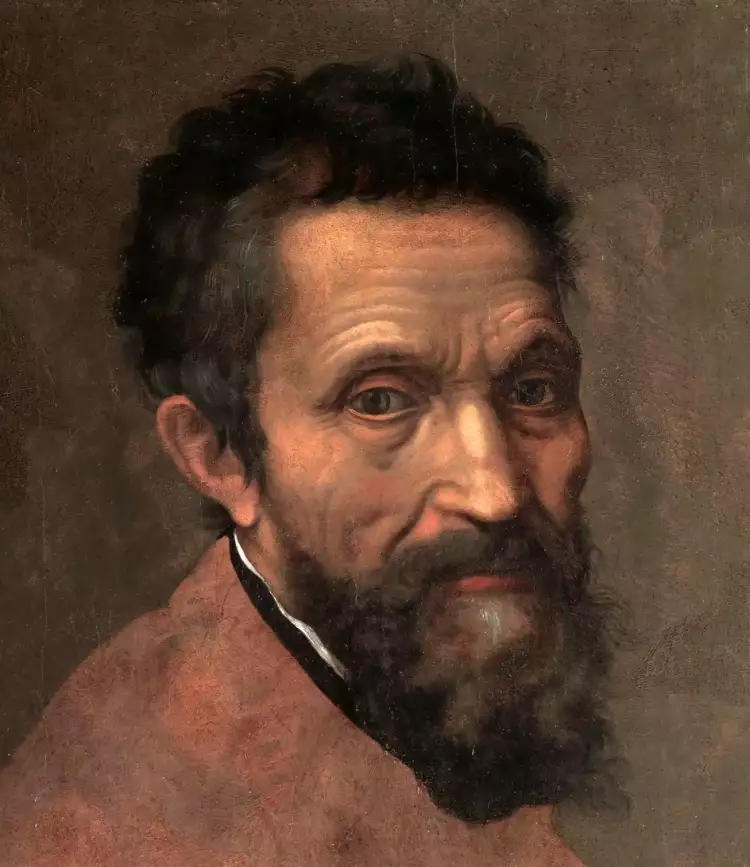 Michelangelo. Daniele da Volterra. Portrait of Michelangelo, 1544
Michelangelo. Daniele da Volterra. Portrait of Michelangelo, 1544
Michelangelo lived a long and eventful life, making a significant contribution to world culture. His name stands alongside two other great figures of the Renaissance: Raphael (Raffaello Santi) and Leonardo da Vinci, and the genius works of the artist have been considered exemplars of perfection in the visual arts for over five centuries.
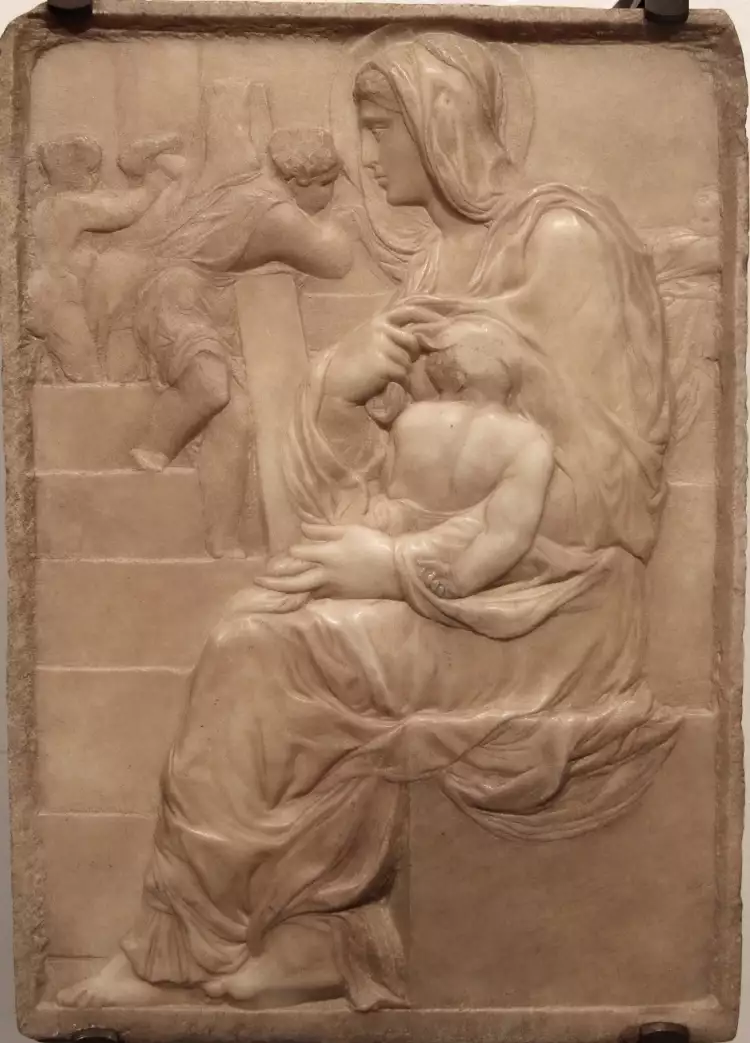 Michelangelo. Madonna of the Stairs, 1491
Michelangelo. Madonna of the Stairs, 1491
Biography of Michelangelo
Michelangelo di Lodovico di Leonardo di Buonarroti Simoni was born on Monday, March 6, 1475, in the small town of Caprese near Florence. He was the second child of the aristocratic banker Lodovico Buonarroti. The boy's mother died when he was just six years old, and his father remarried, sending him to be raised by a rural couple, the Topolinos. The young genius quickly learned to work with clay and displayed remarkable artistic abilities.
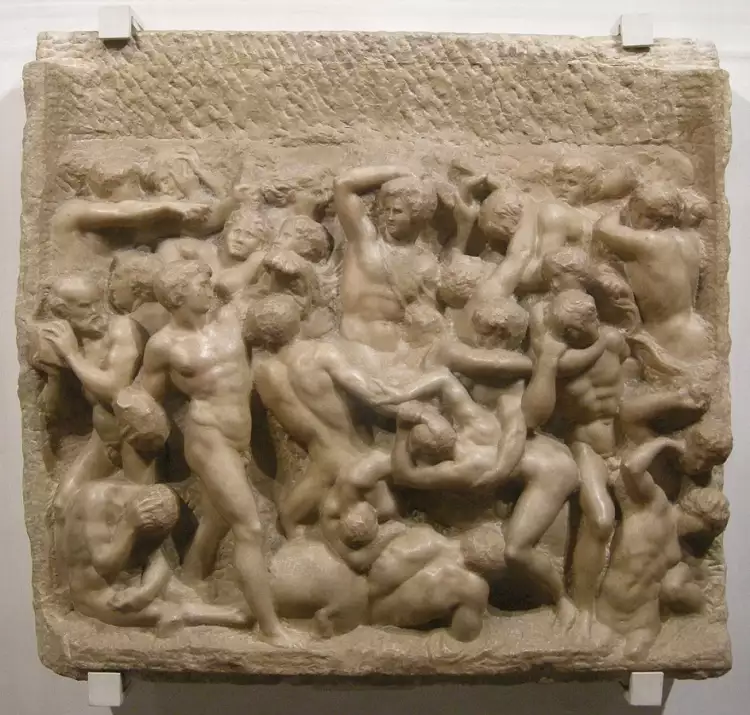 Michelangelo. Battle of the Centaurs, 1492
Michelangelo. Battle of the Centaurs, 1492
In 1488, Michelangelo's father sent him to study under the Florentine artist Domenico Ghirlandaio, who taught the young boy the basics of painting. However, the teenager was more interested in sculpture, so a year later, he moved to the school of Bertoldo di Giovanni, under the patronage of the powerful Lorenzo de Medici. The all-powerful ruler of Florence recognized the young artist's talent and took him under his personal protection. In 1492, Lorenzo passed away, and Michelangelo was forced to return home to his father.
The year 1495 marked a turning point in the artist's life. He received his first major commission to create sculptural compositions for the tomb of Saint Dominic in Bologna, gaining fame throughout Italy. In 1496, at the invitation of Cardinal Raffaele Riario, Michelangelo moved to Rome and lived there for five years, creating numerous sculptures for the papal throne and city temples.
Throughout his life, Michelangelo frequently moved between Florence and Rome. He was invited to the capital by the heads of the Catholic Church and received substantial commissions. In total, the artist collaborated with nine Roman popes, each of whom highly valued his genius.
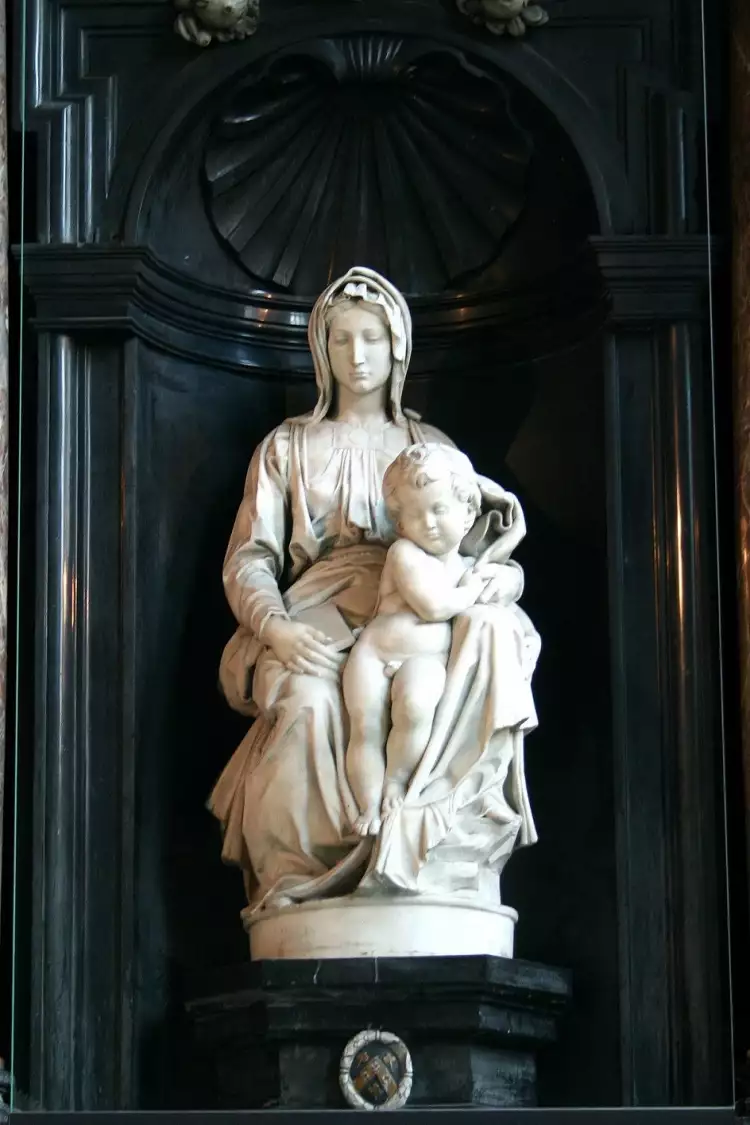 Michelangelo. Madonna of Bruges, 1501-1504
Michelangelo. Madonna of Bruges, 1501-1504
In addition to his sculptural works, Michelangelo devoted much of his time to creating frescoes. He spent a total of 4 years working on the frescoes of the Sistine Chapel ceiling, but the result exceeded the boldest expectations of the patrons. This grand composition includes over 300 meticulously detailed figures, and it continues to be admired by millions of tourists who visit Rome annually.
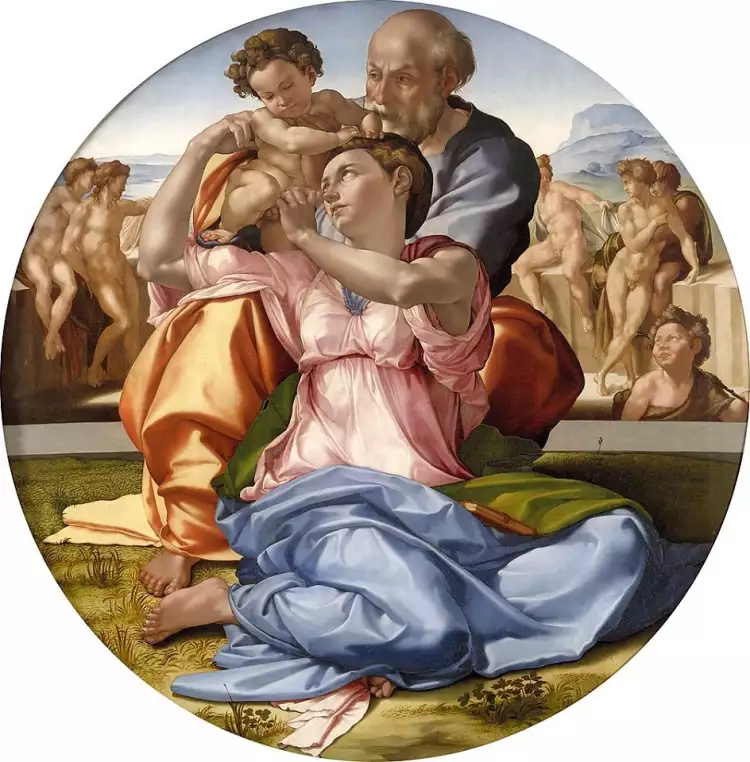 Michelangelo. Doni Tondo, 1504-1506
Michelangelo. Doni Tondo, 1504-1506
Michelangelo made a significant contribution to world literature as well. He left more than 300 sonnets on love and philosophical themes to his descendants. Almost all of his poetic works were dedicated to the poetess Vittoria Colonna, with whom he was friends for about 40 years. However, their relationship was strictly platonic; Michelangelo was never married and kept his personal life carefully concealed from outsiders.
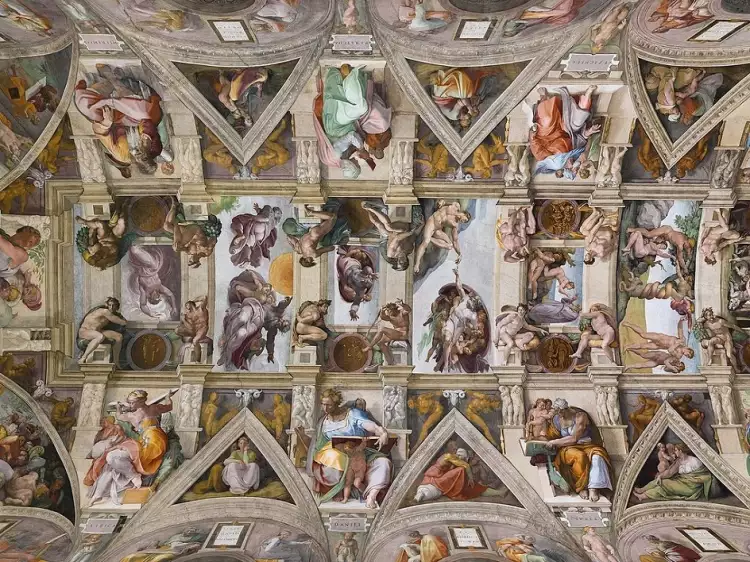 Michelangelo. The painting of the vault of the Sistine Chapel, 1508-1512
Michelangelo. The painting of the vault of the Sistine Chapel, 1508-1512
Starting from the mid-1540s, the artist received a large number of architectural commissions. Among the famous works of the master are the creation of the façade of the Palazzo Farnese and the renovation of the Roman Capitoline Hill. However, it was his main architectural creation, St. Peter's Basilica, that brought worldwide fame to the genius.
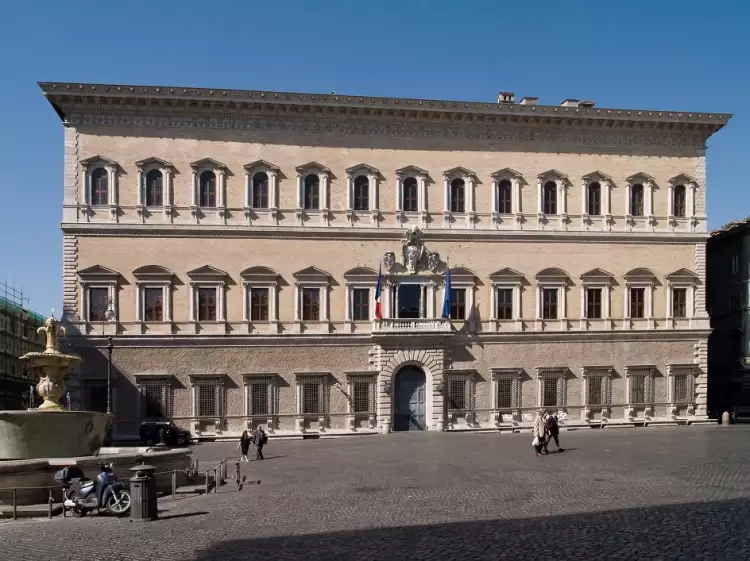 Michelangelo. Palazzo Farnese, 1515
Michelangelo. Palazzo Farnese, 1515
Michelangelo is credited with the central idea of the famous central-domed structure. He supervised architectural work in the world's primary Catholic church for a total of 18 years, and the construction of the basilica was completed after the genius's death in the early 17th century.
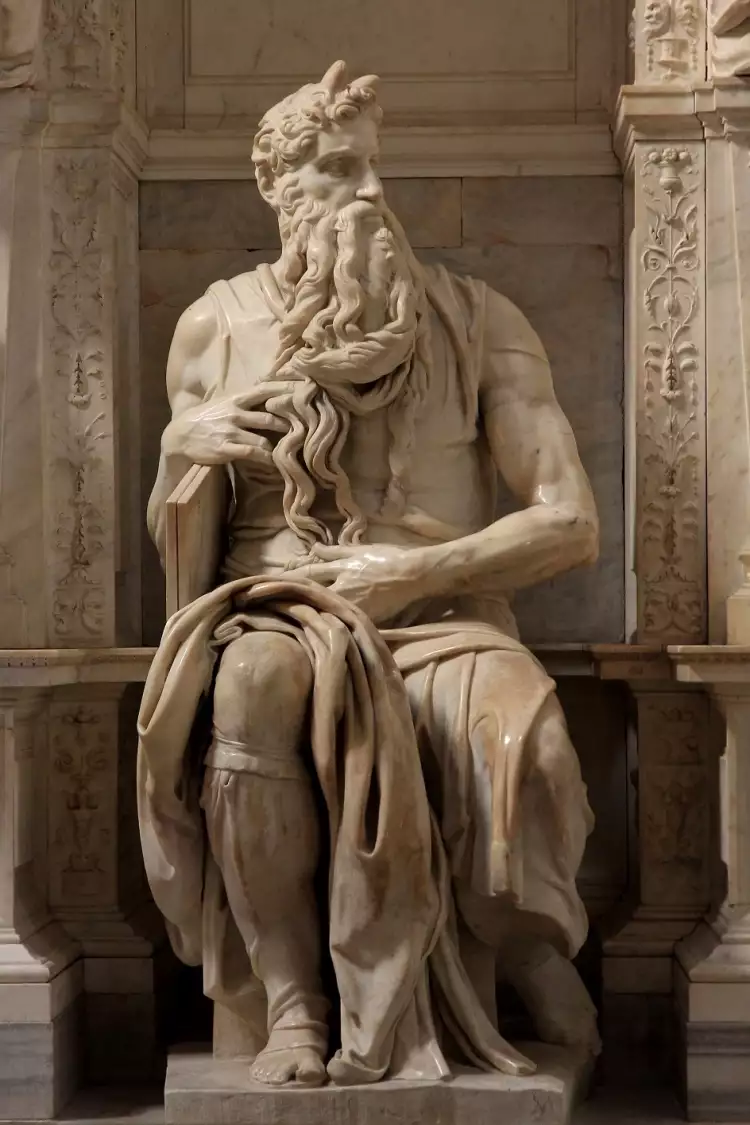 Michelangelo. Moses, 1513-1515
Michelangelo. Moses, 1513-1515
Michelangelo's creative legacy in painting is noticeably smaller in volume compared to his numerous sculptural and architectural works. Only a few paintings by the great master have survived to this day, and he was not particularly proud of them. However, the brilliant artist left a vast number of sketches created by his own hand to his descendants. He produced them by the hundreds during his lifetime while working on sculptures and architectural projects. The genius's drawings continue to astound art enthusiasts with their majestic forms and noble style.
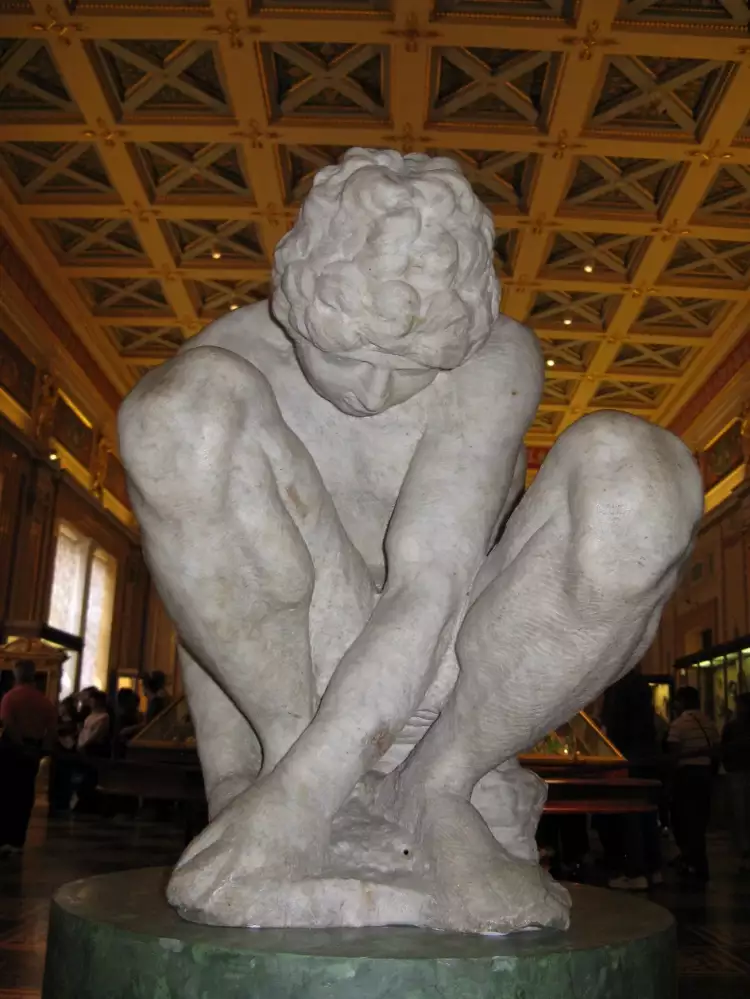 Michelangelo. Crouching Boy, 1530-1534
Michelangelo. Crouching Boy, 1530-1534
Michelangelo died on February 18, 1564, at the age of 88. After the master's death, Pope Pius IV ordered the construction of a luxurious tomb for him in St. Peter's Basilica, but these plans were never realized. Five months later, Michelangelo's body was transported to Florence and laid to rest with great honor in the Basilica of Santa Croce, next to the remains of another great Italian, Niccolò Machiavelli.
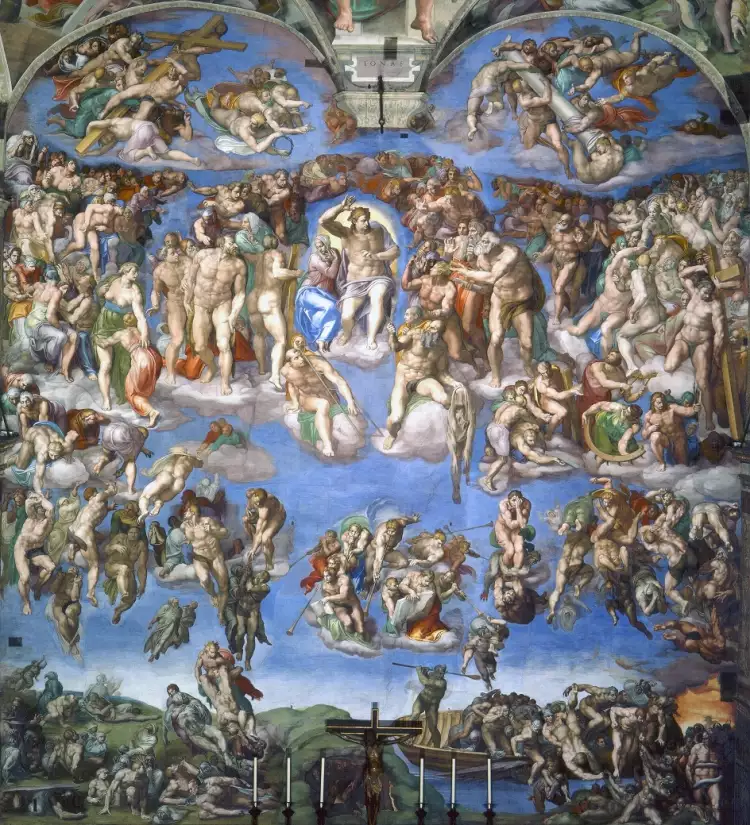 Michelangelo. The Last Judgment, 1536-1541
Michelangelo. The Last Judgment, 1536-1541
Five famous artists worked on creating Michelangelo's unique tomb:
- Giorgio Vasari.
- Battista Lorenzi.
- Giovanni della Opera.
- Valerio Cioli.
- Giovanni Battista Naldini.
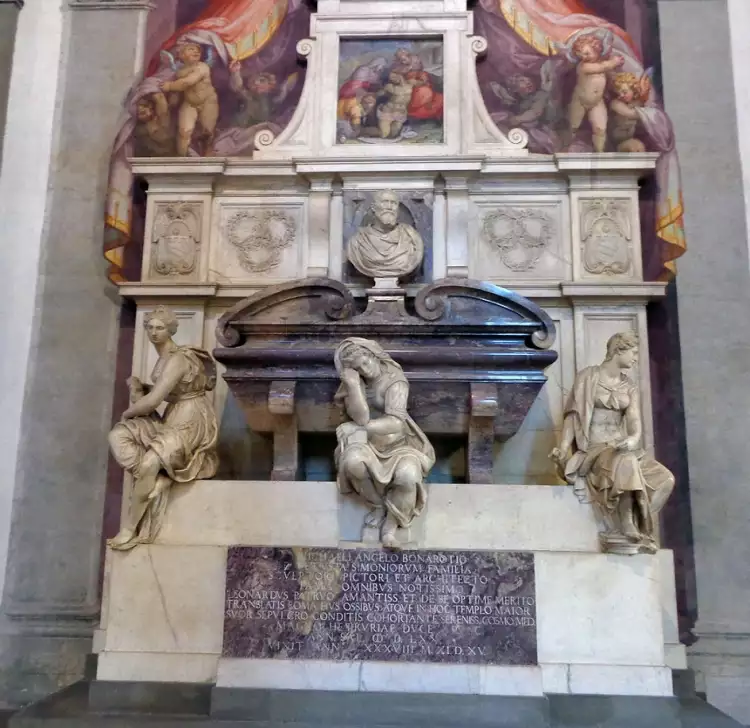 Michelangelo. Tomb of Michelangelo Buonarroti, 1570
Michelangelo. Tomb of Michelangelo Buonarroti, 1570
The Most Famous Works of Michelangelo
Many of Michelangelo's works are well-known to every educated person. They have long been counted among the greatest masterpieces of world art and are truly considered priceless. Among the genius's creations, the following works stand out:
- "Pieta" (1499) - the first and most famous Pieta by the artist, an impeccably detailed complex sculptural composition. Copies of this work adorn dozens of Catholic churches around the world today.
- "David" (1504) - a massive five-meter-tall statue with a grand circular view, a symbol of Renaissance art. Legend has it that Michelangelo was so enamored with this work that he exclaimed in frustration, addressing the depicted hero: "Why don't you speak!" For almost 370 years, the statue graced the square in front of the Palazzo Vecchio in Florence and is now housed in the Academy of Fine Arts.
- "The Sistine Chapel Ceiling" (1508-1512) - a monumental fresco depicting scenes from the Old Testament in the central hall of the ancient building. The most popular exhibit among all the Vatican museums and a source of pride for the Catholic Church.
- "Moses" (1515) - the central statue of Pope Julius IV's tomb. The Old Testament prophet is depicted in an original manner with two small bony protrusions on his head, which art historians believe is due to a mistranslation of the Hebrew word "cornuta" (meaning "radiant" rather than "horned") in 16th-century Bibles.
- "Dome of St. Peter's Basilica" (1546-1564) - the greatest architectural masterpiece by the genius, the most grandiose part of the sacred structure for Catholics worldwide, and the tallest dome in the world. Michelangelo's students completed the work 26 years after the artist's death.
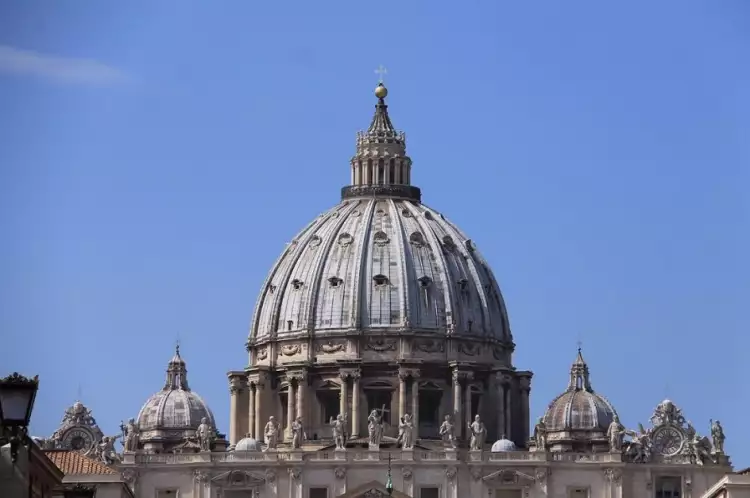 Michelangelo. The dome of St Peter's Basilica, 1546-1564
Michelangelo. The dome of St Peter's Basilica, 1546-1564
On the Very Important Lot platform, art enthusiasts from around the world have the opportunity not only to read interesting articles in the blog but also to participate in art auctions. Here, you can also buy paintings and sculptures from contemporary artists without intermediaries.
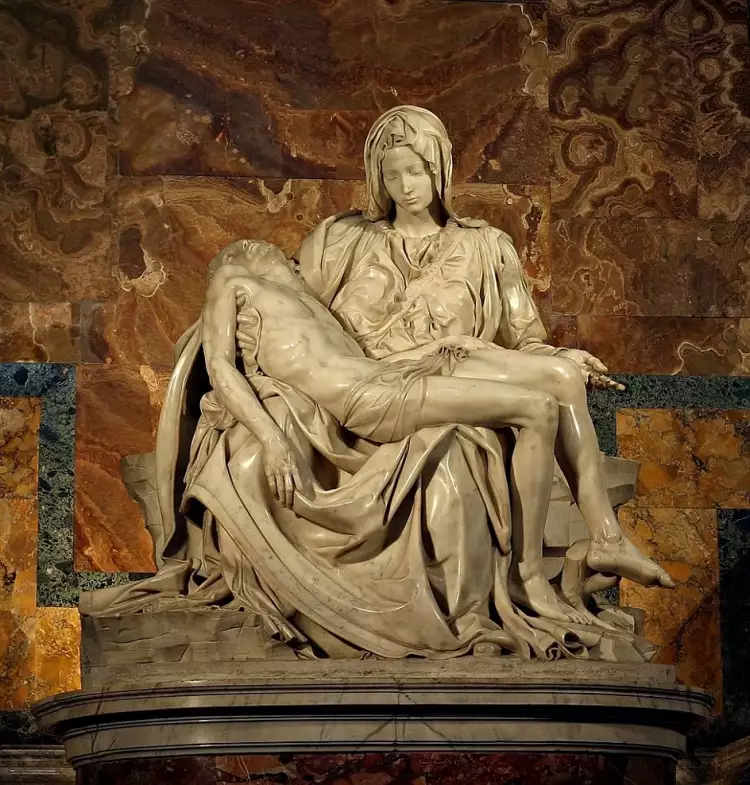
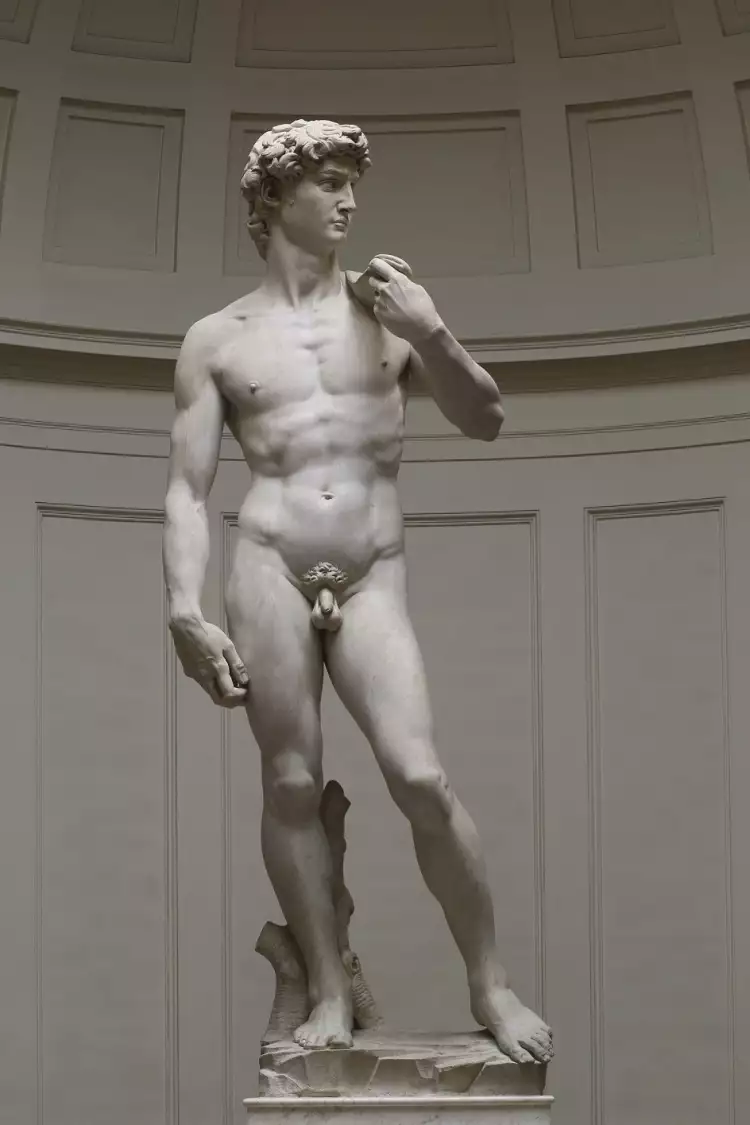
 Glamour in photography is a beautiful genre with elements of elegance and luxury
Glamour in photography is a beautiful genre with elements of elegance and luxury  Caspar David Friedrich is the most famous and melancholic romanticist of German painting
Caspar David Friedrich is the most famous and melancholic romanticist of German painting 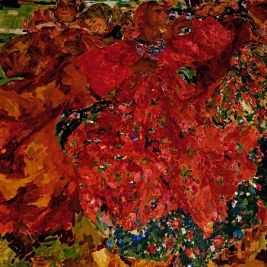 The painting " The Whirlwind" by Filipp Andreevich Malyavin is an inspiring hymn to the beauty and strength of character of Russian peasant women
The painting " The Whirlwind" by Filipp Andreevich Malyavin is an inspiring hymn to the beauty and strength of character of Russian peasant women 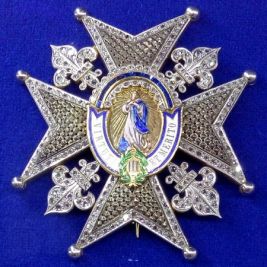 Order of Carlos III is the highest civilian award in Spain
Order of Carlos III is the highest civilian award in Spain  Antique arms and armour from all over the world
Antique arms and armour from all over the world  Orders of France - from the Middle Ages to the present day
Orders of France - from the Middle Ages to the present day  The Rise of Generative Art: Bridging Technology and Creativity
The Rise of Generative Art: Bridging Technology and Creativity 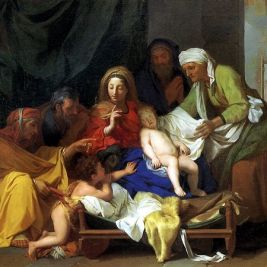 Classicism: strict ideals of high style - characteristics, history, iconic classicists
Classicism: strict ideals of high style - characteristics, history, iconic classicists 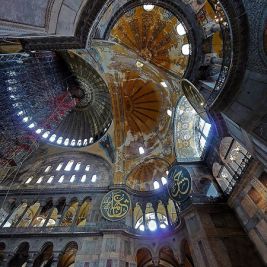 Byzantine art is a vast realm of unique artistic heritage of humanity
Byzantine art is a vast realm of unique artistic heritage of humanity 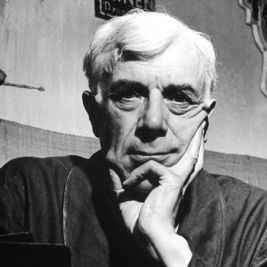 Georges Braque - the founder of Cubism in world art
Georges Braque - the founder of Cubism in world art